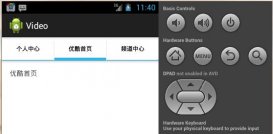本文实例讲述了Android开发之获取LayoutInflater对象的方法。分享给大家供大家参考,具体如下:
在写Android程序时,有时候会编写自定义的View,使用Inflater对象来将布局文件解析成一个View。本文主要目的是总结获取LayoutInflater对象的方法。
1、若能获取context对象,可以有以下几种方法:
|
1
2
|
LayoutInflater inflater = (LayoutInflater)context.getSystemService(Context.LAYOUT_INFLATER_SERVICE);View child = inflater.inflate(R.layout.child, null); |
或者:
|
1
2
|
LayoutInflater inflater = LayoutInflater.from(context);View child = inflater.inflate(R.layout.child, null); |
2、在一个Activity中,可以有以下方法:
|
1
|
View child = getLayoutInflater().inflate(R.layout.child, item, false); |
或者:
|
1
2
3
|
View view;LayoutInflater inflater = (LayoutInflater) getContext().getSystemService(Context.LAYOUT_INFLATER_SERVICE);view = inflater.inflate(R.layout.mylayout, null); |
方法1和方法2其实都是对context().getSystemService()的使用
3、使用View的静态方法:
|
1
|
View view=View.inflate(context, R.layout.child, null) |
inflate实现源码如下:
|
1
2
3
4
5
6
7
8
9
10
11
12
13
14
|
/** * Inflate a view from an XML resource. This convenience method wraps the {@link * LayoutInflater} class, which provides a full range of options for view inflation. * * @param context The Context object for your activity or application. * @param resource The resource ID to inflate * @param root A view group that will be the parent. Used to properly inflate the * layout_* parameters. * @see LayoutInflater */public static View inflate(Context context, int resource, ViewGroup root) { LayoutInflater factory = LayoutInflater.from(context); return factory.inflate(resource, root);} |
LayoutInflater.from(context)实际上是对方法1的包装,可参考以下源码:
|
1
2
3
4
5
6
7
8
9
10
11
|
/** * Obtains the LayoutInflater from the given context. */public static LayoutInflater from(Context context) { LayoutInflater LayoutInflater = (LayoutInflater) context.getSystemService(Context.LAYOUT_INFLATER_SERVICE); if (LayoutInflater == null) { throw new AssertionError("LayoutInflater not found."); } return LayoutInflater;} |
希望本文所述对大家Android程序设计有所帮助。














